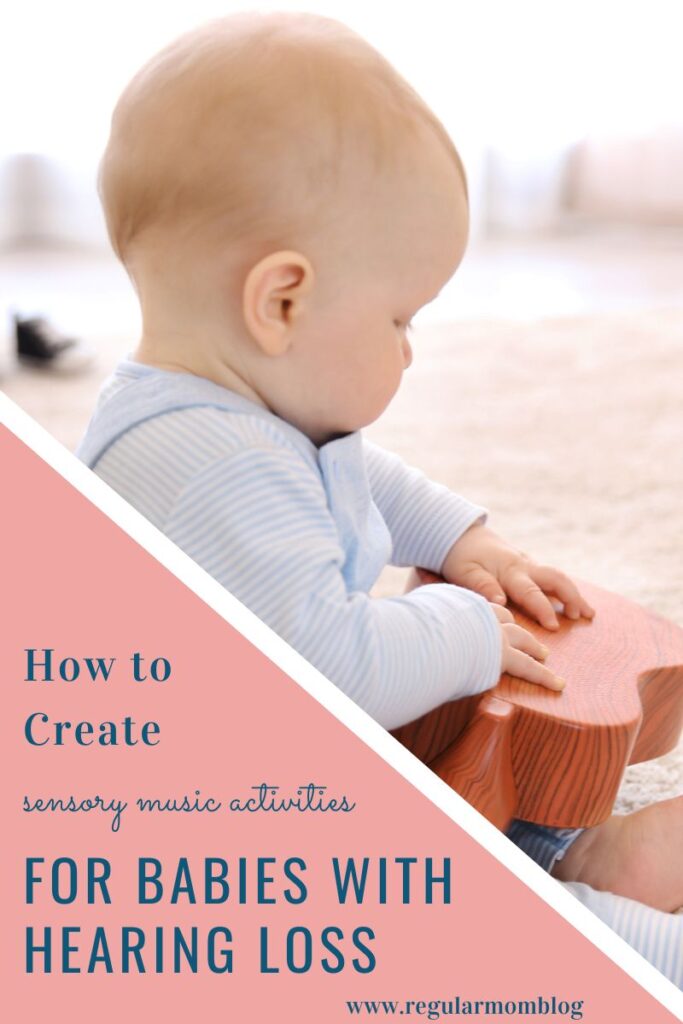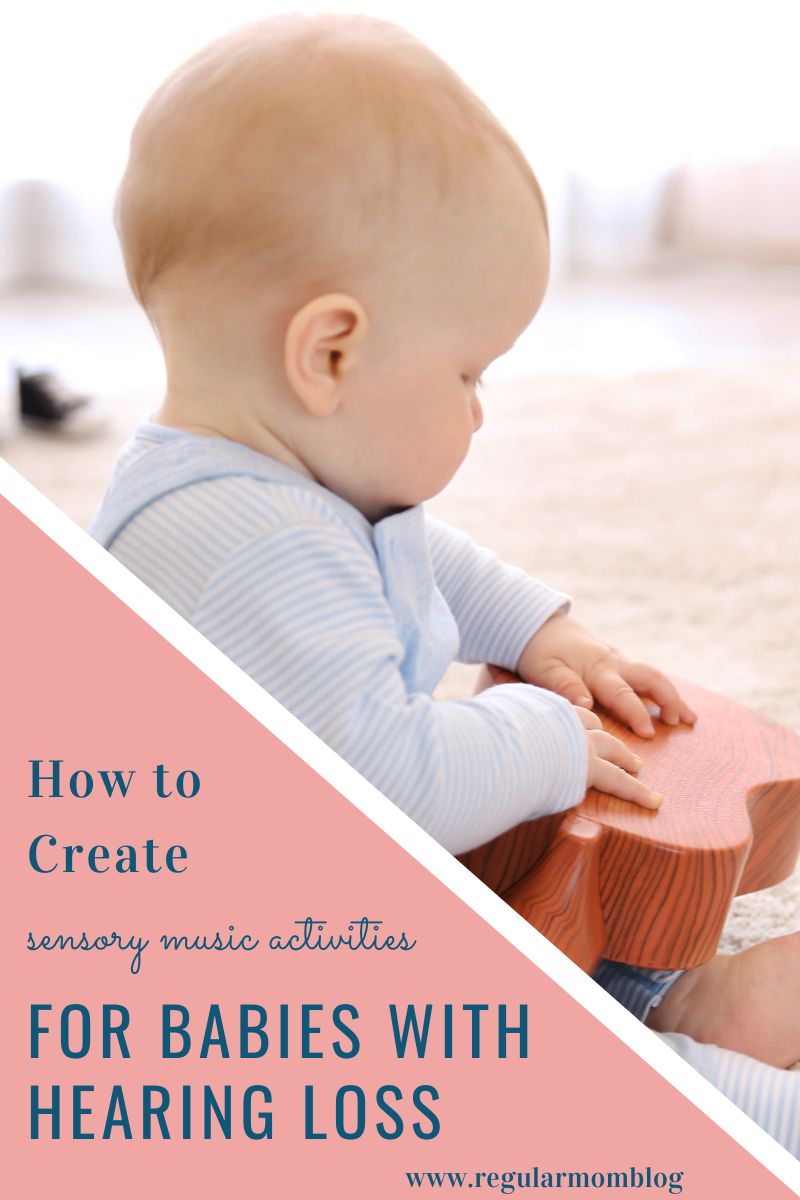advocacy
It’s time to get clear on a language strategy for your child so that you can consistently practice language in your home and watch your child’s communication soar in less time!
Welcome!
I want to show you how to build better language skills at home so you can also parent with clarity and confidence!
Categories
hearing loss
sensory activities
sign language
1:1 Language Coaching
These are the kinds of resources that you will find on my blog!
Happy reading!
Sensory Music Activities for Babies With Hearing Loss
June 2, 2023
When it comes to young babies, the benefits of introducing sounds and music to them are immeasurable. This is especially true for babies with hearing loss. Read the post to discover how to use sensory music activities for babies in your daily routine, and more sensory activities for babies 6-12 months.

There’s something magical about the power of music and sound. It captivates our attention, evokes emotions, and creates memories that last a lifetime.
In fact, research has shown that the earlier babies with hearing loss are exposed to sound, the better their auditory skills develop. That’s why sensory music activities for babies are a fantastic way to enhance their development, create sensory-rich experiences, and build language skills.
In this blog post, we’ll explore the benefits of music-based activities for babies, delve into different sounds and instruments, and provide tips on crafting fun and engaging songs that everyone can enjoy.
Sensory Music Activities for Babies
Babies are natural learners, and it’s never too early to introduce them to music-based activities that can help stimulate their senses and enhance their development.
What many don’t realize is that creating a sensory-rich environment can also help little ones with hearing loss.
Simple songs that include different instruments and textures can help babies with hearing challenges differentiate between sounds and vibrations.

And by engaging with music together, parents and caregivers can bond with their babies while providing a fun and meaningful activity that will leave a lasting impact on their little ones.
Explore Sounds and instruments for SEnsory music Activities
Music is a universal language that speaks to everyone, but for babies with hearing loss, it can be an especially useful tool for engaging and stimulating their other senses.
When it comes to finding unique instruments to introduce your child to music, the options are endless – and many of them can be found right inside your own home!
For example, did you know that you can turn items like pots and pans, plastic containers and bottles, and even cardboard boxes into makeshift drums and percussion instruments?

Take the humble kitchen utensil, for instance. A whisk can be used to create a jingling sound, while a spatula can be used like a scraper.
Don’t forget about the power of your own voice – singing is one of the most accessible and entertaining ways to introduce your child to music.
Try experimenting with different vocal techniques, like humming, whispering, or beatboxing.
You can also use your voice to create sound effects – try imitating animal sounds, thunder, or even spacey sci-fi noises.
Create sensory-rich experiences with shakers, rattles, and drums
When it comes to creating sensory-rich experiences, shakers, rattles, and drums are essential tools.
These musical instruments offer babies with hearing loss a chance to engage in sensory music activities for babies that help to stimulate their minds and bodies.
Through the different sounds and vibrations produced by the instruments, babies can explore and interact with the world around them while building their cognitive skills.

Whether it’s shaking a maraca or beating a drum, these musical activities can provide a fun and interactive way for babies to learn and grow.
UtilizE rhythm and repetition for learning language skills
Sensory music activities are a great way to enhance language exposure and skill-building.
By utilizing rhythm and repetition, babies with hearing loss can begin to comprehend the sounds and patterns of language.
The key is to select engaging songs that can become part of a daily routine. This will make it easier for the baby to recognize and remember the melody and lyrics.
Upbeat, interactive songs can help babies associate sounds with various emotions and can help them learn about the environment around them. With sensory song activities, enhanced language skills are just around the corner.
Craft fun songs together as a family
There’s nothing quite like creating music together as a family. Not only is it fun and entertaining, but it’s also a great way to bond and foster creativity in your little ones.
And if you have a baby with hearing loss, sensory music activities can be especially beneficial.
These activities focus on engaging multiple senses through music and movement, allowing your child to experience the joy of music in a more tactile way.
Whether it’s shaking a rattle or feeling the beat of a drum, it’s a wonderful way to introduce them to the world of music and build a strong foundation for their future musical endeavors.
So grab your instruments and get ready to rock out as a family!

Introducing music and sound to children with hearing loss can have a profound impact on their development and overall well-being.
Music-based activities can help children with hearing loss to build their auditory skills, enhance their communication, and learn to express themselves in new and creative ways.
Whether you are singing lullabies, exploring different musical instruments, or crafting songs together as a family, music-based activities can enhance your child’s development and create joyful moments of bonding and learning.
Don’t forget to download your free Sensory Play Guide!
More REsources
Peek a Boo Sensory Activities for Babies
Facial Expression Sensory Activities for Babies
Easy Sensory Activities for Babies 6-12 months
What is your baby’s favorite home- made instrument? Let me know in the comments!

tell me more!
tell me more!
@alemerinobranding.co
DESIGNED BY: ALE MERINO BRANDING CO.
COACHING
Navigation
PODCAST
ABOUT
HOME
Legal
PRIVACY POLICY
TERMS & CONDITIONS
Let's connect
EMAIL hello@raisingdeafkids.com
BLOG